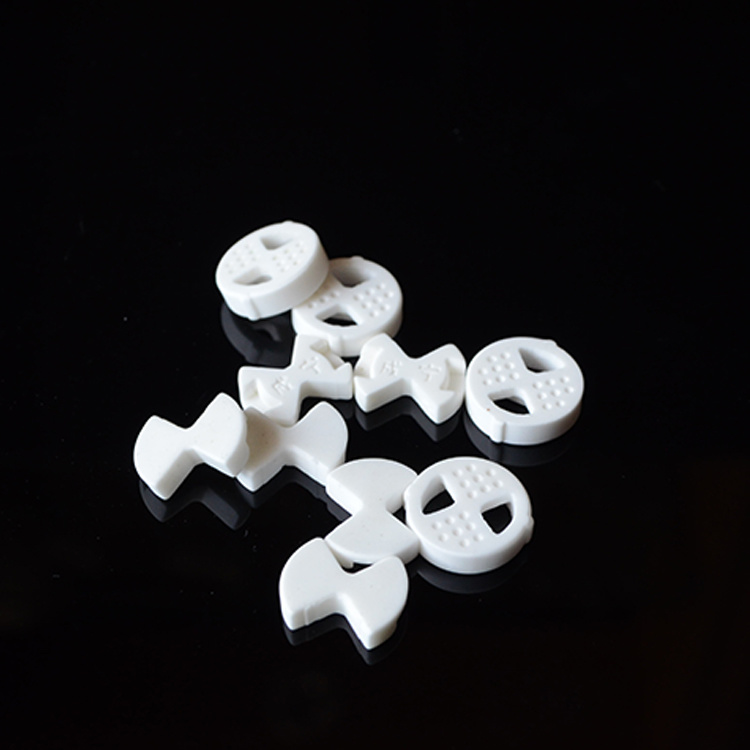
Maximize Efficiency with Gold Melting Ceramic Pots
Time:
2023-08-16 12:01
Source:
Table of Contents:
1. Introduction: The Importance of Efficient Gold Melting
2. Understanding the Role of Ceramic Pots in Gold Melting
3. Advantages of Gold Melting Ceramic Pots
a. Exceptional Heat Resistance
b. Chemical Stability for Precise Melting
c. Superior Thermal Insulation
4. Choosing the Right Ceramic Pot for Gold Melting
a. Material Composition
b. Size and Capacity
c. Shape and Design
5. Maintenance and Care of Gold Melting Ceramic Pots
a. Cleaning and Removal of Residual Metals
b. Preventing Cracks and Breakage
c. Storage and Handling Tips
6. Frequently Asked Questions (FAQs)
a. Can gold melting ceramic pots be used for other metals?
b. Can ceramic pots withstand high temperatures during gold melting?
c. How long do gold melting ceramic pots last?
d. Can I use a damaged ceramic pot for gold melting?
e. Are there any safety precautions when using ceramic pots for gold melting?
7. Conclusion
1. Introduction: The Importance of Efficient Gold Melting
As a goldsmith or jeweler, the efficient melting of gold is crucial for seamless production processes. The choice of equipment, such as the type of crucible used, plays a significant role in ensuring optimal results. In this article, we will delve into the world of gold melting ceramic pots and how they can maximize your efficiency in the gold melting process.
2. Understanding the Role of Ceramic Pots in Gold Melting
Ceramic pots have long been relied upon for their exceptional properties that make them ideal for gold melting. These pots are typically made from a combination of refractory minerals and heat-resistant ceramic materials. Their unique properties help create an environment that facilitates efficient and precise gold melting.
3. Advantages of Gold Melting Ceramic Pots
a. Exceptional Heat Resistance
Gold melting ceramic pots are designed to withstand extremely high temperatures, often exceeding 2400°F (1300°C). This exceptional heat resistance ensures that the ceramic pot remains intact and maintains its structural integrity throughout the melting process.
b. Chemical Stability for Precise Melting
Ceramic pots possess excellent chemical stability, which is crucial for gold melting. They do not react with molten gold or other common fluxes, ensuring the purity and quality of the final product. This stability allows for precise control over the melting process, minimizing any potential impurities.
c. Superior Thermal Insulation
The unique composition of ceramic pots provides superior thermal insulation properties, allowing for efficient heat retention. This insulation helps maintain stable temperatures within the pot, reducing heat loss and optimizing energy consumption during the melting process.
4. Choosing the Right Ceramic Pot for Gold Melting
a. Material Composition
When selecting a ceramic pot for gold melting, consider the material composition. Look for pots made from high-quality refractory materials with a high alumina content, as they offer excellent thermal and chemical resistance.
b. Size and Capacity
The size and capacity of the ceramic pot should match your specific gold melting needs. Ensure the pot is large enough to accommodate the amount of gold you typically work with, but not so large that excessive heat loss occurs.
c. Shape and Design
Consider the shape and design of the ceramic pot as it can impact the efficiency of the melting process. Opt for pots with tapered or conical shapes, as they allow for easy pouring of molten gold and minimize the risk of splashing or spilling.
5. Maintenance and Care of Gold Melting Ceramic Pots
a. Cleaning and Removal of Residual Metals
Regularly clean your gold melting ceramic pot to remove any residual metals or fluxes. Use a mild cleaning solution and non-abrasive tools to prevent any damage to the pot's surface.
b. Preventing Cracks and Breakage
To prevent cracks and breakage, avoid rapid temperature changes and excessive thermal stress. Gradually heat up and cool down the ceramic pot to ensure its longevity.
c. Storage and Handling Tips
Store your ceramic pot in a secure and dry location to prevent any potential damage. When handling the pot, use caution and avoid dropping or mishandling, as this can lead to cracks or breakage.
6. Frequently Asked Questions (FAQs)
a. Can gold melting ceramic pots be used for other metals?
Gold melting ceramic pots are primarily designed for gold melting; however, they can also be used for melting other precious metals such as silver or platinum.
b. Can ceramic pots withstand high temperatures during gold melting?
Yes, ceramic pots are specifically engineered to withstand high temperatures, making them suitable for gold melting.
c. How long do gold melting ceramic pots last?
The lifespan of a gold melting ceramic pot depends on various factors, including frequency of use, proper maintenance, and handling. With careful use and regular maintenance, a ceramic pot can last for an extended period.
d. Can I use a damaged ceramic pot for gold melting?
It is advised not to use a damaged ceramic pot for gold melting, as it may compromise the quality of the melting process and potentially lead to accidents.
e. Are there any safety precautions when using ceramic pots for gold melting?
When working with gold melting ceramic pots, always wear appropriate protective gear, such as heat-resistant gloves and goggles, to ensure personal safety. Additionally, ensure proper ventilation in the workspace to prevent the buildup of harmful fumes.
7. Conclusion
In conclusion, gold melting ceramic pots provide a reliable and efficient solution for goldsmiths and jewelers looking to maximize their efficiency in the gold melting process. With exceptional heat resistance, chemical stability, and superior thermal insulation, these pots offer a range of advantages. By choosing the right ceramic pot, properly maintaining it, and following safety precautions, you can optimize your gold melting process and achieve high-quality results. Invest in gold melting ceramic pots and unlock the full potential of your goldsmithing endeavors.
1. Introduction: The Importance of Efficient Gold Melting
2. Understanding the Role of Ceramic Pots in Gold Melting
3. Advantages of Gold Melting Ceramic Pots
a. Exceptional Heat Resistance
b. Chemical Stability for Precise Melting
c. Superior Thermal Insulation
4. Choosing the Right Ceramic Pot for Gold Melting
a. Material Composition
b. Size and Capacity
c. Shape and Design
5. Maintenance and Care of Gold Melting Ceramic Pots
a. Cleaning and Removal of Residual Metals
b. Preventing Cracks and Breakage
c. Storage and Handling Tips
6. Frequently Asked Questions (FAQs)
a. Can gold melting ceramic pots be used for other metals?
b. Can ceramic pots withstand high temperatures during gold melting?
c. How long do gold melting ceramic pots last?
d. Can I use a damaged ceramic pot for gold melting?
e. Are there any safety precautions when using ceramic pots for gold melting?
7. Conclusion
1. Introduction: The Importance of Efficient Gold Melting
As a goldsmith or jeweler, the efficient melting of gold is crucial for seamless production processes. The choice of equipment, such as the type of crucible used, plays a significant role in ensuring optimal results. In this article, we will delve into the world of gold melting ceramic pots and how they can maximize your efficiency in the gold melting process.
2. Understanding the Role of Ceramic Pots in Gold Melting
Ceramic pots have long been relied upon for their exceptional properties that make them ideal for gold melting. These pots are typically made from a combination of refractory minerals and heat-resistant ceramic materials. Their unique properties help create an environment that facilitates efficient and precise gold melting.
3. Advantages of Gold Melting Ceramic Pots
a. Exceptional Heat Resistance
Gold melting ceramic pots are designed to withstand extremely high temperatures, often exceeding 2400°F (1300°C). This exceptional heat resistance ensures that the ceramic pot remains intact and maintains its structural integrity throughout the melting process.
b. Chemical Stability for Precise Melting
Ceramic pots possess excellent chemical stability, which is crucial for gold melting. They do not react with molten gold or other common fluxes, ensuring the purity and quality of the final product. This stability allows for precise control over the melting process, minimizing any potential impurities.
c. Superior Thermal Insulation
The unique composition of ceramic pots provides superior thermal insulation properties, allowing for efficient heat retention. This insulation helps maintain stable temperatures within the pot, reducing heat loss and optimizing energy consumption during the melting process.
4. Choosing the Right Ceramic Pot for Gold Melting
a. Material Composition
When selecting a ceramic pot for gold melting, consider the material composition. Look for pots made from high-quality refractory materials with a high alumina content, as they offer excellent thermal and chemical resistance.
b. Size and Capacity
The size and capacity of the ceramic pot should match your specific gold melting needs. Ensure the pot is large enough to accommodate the amount of gold you typically work with, but not so large that excessive heat loss occurs.
c. Shape and Design
Consider the shape and design of the ceramic pot as it can impact the efficiency of the melting process. Opt for pots with tapered or conical shapes, as they allow for easy pouring of molten gold and minimize the risk of splashing or spilling.
5. Maintenance and Care of Gold Melting Ceramic Pots
a. Cleaning and Removal of Residual Metals
Regularly clean your gold melting ceramic pot to remove any residual metals or fluxes. Use a mild cleaning solution and non-abrasive tools to prevent any damage to the pot's surface.
b. Preventing Cracks and Breakage
To prevent cracks and breakage, avoid rapid temperature changes and excessive thermal stress. Gradually heat up and cool down the ceramic pot to ensure its longevity.
c. Storage and Handling Tips
Store your ceramic pot in a secure and dry location to prevent any potential damage. When handling the pot, use caution and avoid dropping or mishandling, as this can lead to cracks or breakage.
6. Frequently Asked Questions (FAQs)
a. Can gold melting ceramic pots be used for other metals?
Gold melting ceramic pots are primarily designed for gold melting; however, they can also be used for melting other precious metals such as silver or platinum.
b. Can ceramic pots withstand high temperatures during gold melting?
Yes, ceramic pots are specifically engineered to withstand high temperatures, making them suitable for gold melting.
c. How long do gold melting ceramic pots last?
The lifespan of a gold melting ceramic pot depends on various factors, including frequency of use, proper maintenance, and handling. With careful use and regular maintenance, a ceramic pot can last for an extended period.
d. Can I use a damaged ceramic pot for gold melting?
It is advised not to use a damaged ceramic pot for gold melting, as it may compromise the quality of the melting process and potentially lead to accidents.
e. Are there any safety precautions when using ceramic pots for gold melting?
When working with gold melting ceramic pots, always wear appropriate protective gear, such as heat-resistant gloves and goggles, to ensure personal safety. Additionally, ensure proper ventilation in the workspace to prevent the buildup of harmful fumes.
7. Conclusion
In conclusion, gold melting ceramic pots provide a reliable and efficient solution for goldsmiths and jewelers looking to maximize their efficiency in the gold melting process. With exceptional heat resistance, chemical stability, and superior thermal insulation, these pots offer a range of advantages. By choosing the right ceramic pot, properly maintaining it, and following safety precautions, you can optimize your gold melting process and achieve high-quality results. Invest in gold melting ceramic pots and unlock the full potential of your goldsmithing endeavors.
gold melting ceramic pot ceramic crucible

